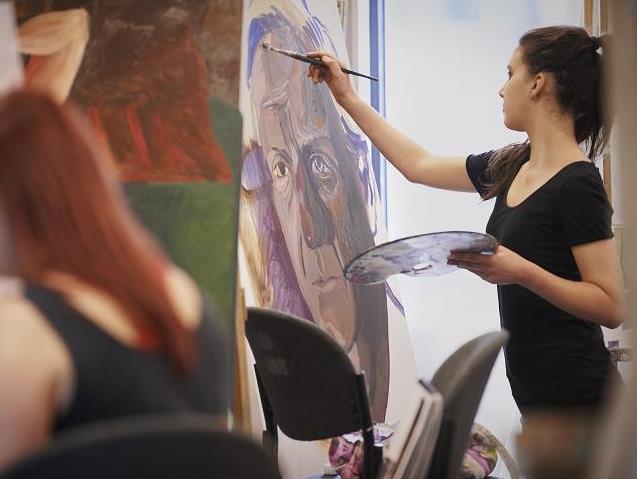Image supplied
At Deakin University, the Schools of Education and Communication and Creative Arts sit within the Faculty of Arts and Education, allowing both areas to work together in a cross disciplinary nature. This encourages creative thinking and fosters learning and creating in an innovative educational environment.
One resulting pathway is a body of alumni well suited to become excellent arts teachers. But there are many other ways in which combining education and creative arts helps prepare graduates for lifelong engagement with the arts.
The skills and experience of studying creative arts creates well-rounded creative thinkers, teachers and citizens. ‘A creative arts degree is a wonderful opportunity for students to explore and develop ideas,’ said Merinda Kelly, a lecturer in arts education at Deakin University. ‘They can have some space to find out who they are and what they want to practice, and to become part of a community of practitioners.’
‘Creative arts and education degrees at Deakin offer multiple options for both undergraduate and postgraduate study, or the option to become arts practitioners. Through engaging in these courses, students learn skills that will set them up well across a multitude of areas. The creative art degree gives them the types of flexibility and agility required to become a really active and productive citizen.’
An arts education student at Deakin becomes qualified in so much more than just arts or education. ‘A lot of our students enter into the teaching stream and end up studying creative arts, and vice versa,’ said lecturer and practicing artist Dr Anne Scott Wilson. ‘Deakin accommodates a double stream, especially at a postgraduate level. We get teachers looking to upskill, and creative practitioners looking to expand their learning.’
Arts education at Deakin is reflecting a broader change in creative practices to become more socially engaged and focussed on community involvement. ‘One of the changes in art practice is a move to become more socially engaged. The distinction between artist and educator is dissolving.
‘A lot of what we do as artists in connected to the community in more tangible ways.’
Study arts education at Deakin
Student outcomes at Deakin vary broadly, said Wilson. ‘Our graduates are not just teachers in schools. A lot of high schools are dropping visual arts programs, and subjects such as design and photography. These disciplines need to be available to young people as they grow up and they are all accessible at Deakin, through both undergraduate and postgraduate study options.
‘Our graduates will fill that gap, in a variety of innovative ways. A lot of people will not end up as artists, but may end up doing something completely different. David Bowie and David Lynch both studied visual arts. The roots of their creative thinking began in art school.’
‘With special training in the creative arts, our students are well prepared for that kind of innovation because they have the collective experience of generating ideas. They cannot get that outside the university experience,’ said Wilson.
A creative arts course at Deakin offers practical skills on top of creative skills. ‘Students need a really strong ability to communicate … and a creative arts degree at Deakin offers the skills they will need.’
For those who are wishing to combine their passions and are seeking a rewarding career in arts education, Deakin offers a unique double degree in arts and secondary teaching. Students will graduate with a Bachelor of Arts and a Master of Teaching and will be skilled across a range of discipline areas. For experienced creative practitioners, a Master of Teaching will allow them to use their current skills to become a creative arts teaching professional.
To find out more about Deakin’s courses in Education and Creative Arts, visit:





